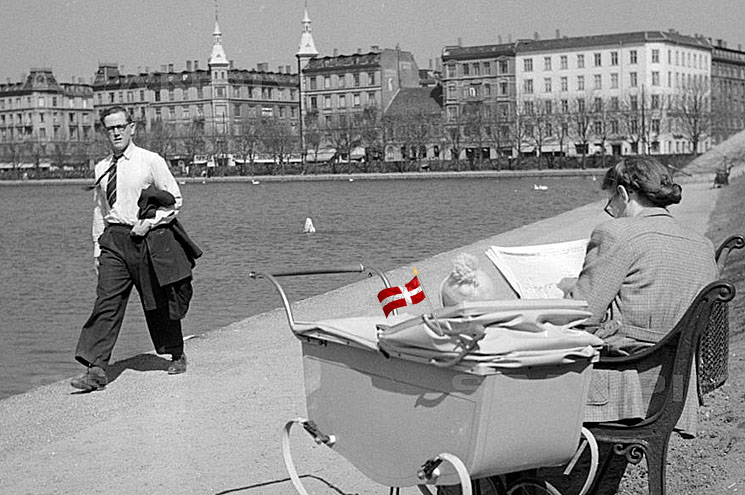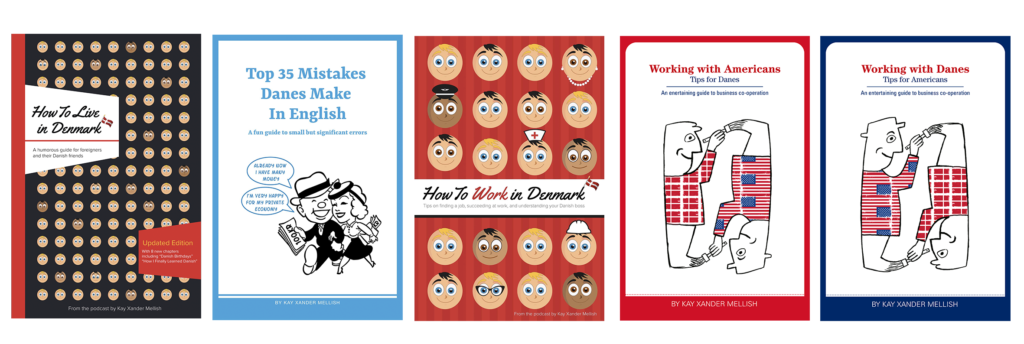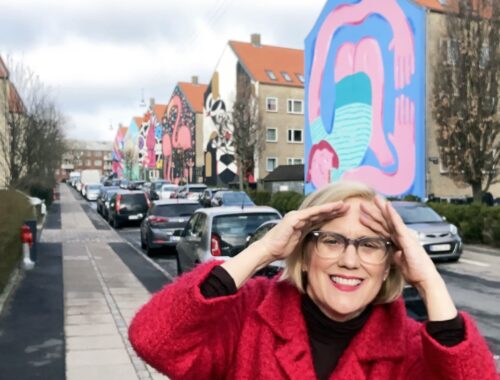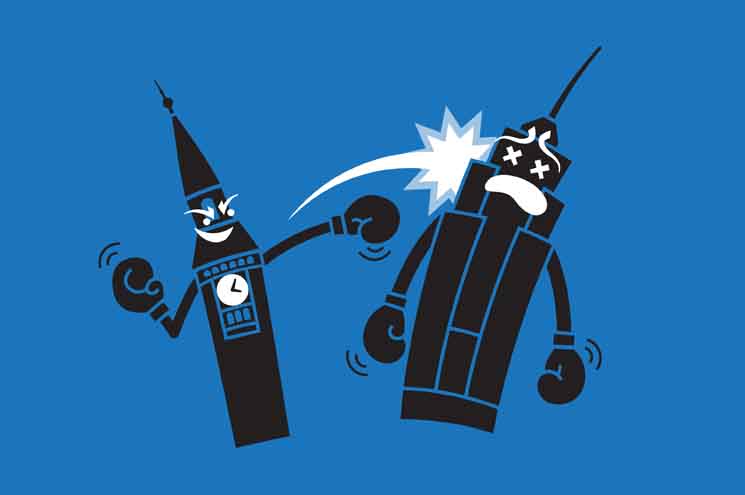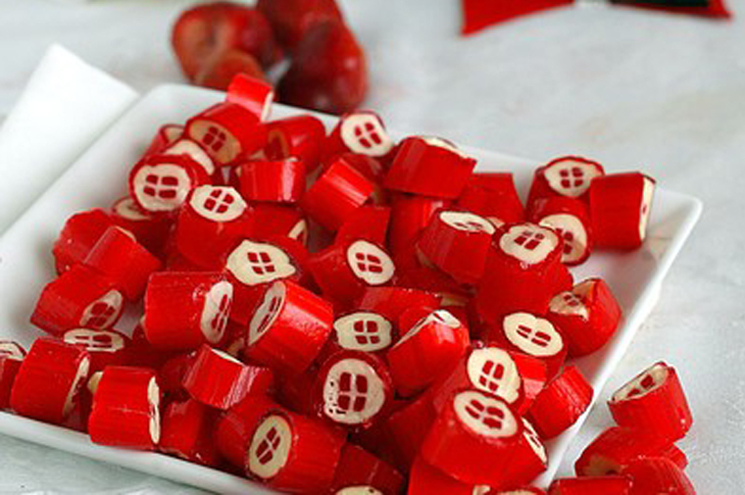It’s spring in Denmark, and spring is by far my favorite season here. The wonderful white Scandinavian sunlight is back after the dark days of the winter, the flowers are coming out on the trees, and everybody’s in a good mood. The outdoor cafés are full of people again – sometimes draped in blankets to keep warm, but outside all the same.
April and May are often the best months for weather in Denmark, along with September. Summers can be rainy. And April is when Tivoli opens in Copenhagen. (Side note: when you see a man in Denmark with his trousers accidentally unzipped, you quietly inform him “Tivoli is open!”)
Tivoli is one of the world’s great non-disappointing tourist attractions – it’s constantly updated, with new shops, new rides, fresh flowers and fresh restaurants. And in the spring, it’s not as crowded as it is in the summer. You can hang out all day, have a picnic, ride the rollercoaster, even hear some bands play.
And you’ll have time to do that, because spring is when the Danes’ public holidays really stack up. There are three public holidays around Easter – Thursday, Friday and the following Monday – and then several other public holidays, like Ascension Day, and the Friday after it. And Whitsunday, and the Monday after it.
Danish fundamentalists love Big Prayer Day
Plus Big Prayer Day, which is in May this year. Big Prayer day is a Danish-only holiday, and there have even been suggestions that it should be eliminated, in order to save money for the government or even introduce a new Muslim holiday to go along with all the Christian ones.
Technically, there’s no reason that Muslims or Buddhists or Jews couldn’t all pray along on Big Prayer Day, but Big Prayer day’s origins are Christian. The day was a compromise. In the olden days, all sorts of guilds were laying down their tools for their own prayer days at inconvenient times, so it was decided to roll all the individual prayer days into one Big Prayer Day.
Big Prayer day has it’s own traditions. For example, you’re supposed to take a walk on Big Prayer day. At one point, it was a walk around the Copenhagen city ramparts, but now it’s just a walk, anywhere. And Big Prayer Day has a special food, known as Hot Wheat Buns. Originally, bakers were closed on Big Prayer Day, so you would get your Wheat Buns the night before and heat them up on the day. Traditions like this are now mostly observed by Danish fundamentalists.
Anyway, when I first came to Denmark, I arrived right before all of these big holidays and I didn’t know anyone and I was living in a hotel and I thought – what do people do with all these holidays?
Now I know. You take a walk, or a bike trip. You go to Tivoli. You go to your Danish summer house. Or, if you’re 14 years old, you get confirmed.
Confirmation: Religious event or consumer event?
Spring is also confirmation season in Denmark. In the Christian religion, confirmation is when you take responsibility as an adult within the church. So thousands of Danish teenagers, having spent the winter learning the names of Old Testament prophets and Jesus’ disciples, are ready for confirmation in the spring.
On each Sunday or public holiday in April or May, Danish churches are filled with up to 40 kids at a time going through confirmation ceremonies – the boys in new suits, the girls in pretty dresses. Now, as I’ve noted, Danes are not particularly religious. You might ask – what’s with the big church service?
The deal is, each confirmation is followed by a party, a big party. Every member of the teenager’s extended family is invited, and all of them are expected to bring money. Gifts of money are part of the confirmation experience, probably one of the best parts, if you ask the teenagers.
Then the day after the ceremony, the kids are allowed to skip school and go shopping to spend all their new cash. This is called ‘Blue Monday’ and it’s an accepted indulgence and a great driver of the Danish economy. Shopping malls order extra clothes and electronics for the wave of teenage shoppers. I’ve even seen some local tourist boards offer Blue Monday package trips for confirmation kids from the countryside.
Of course, the confirmation service also has some advantages for the Danish church: it gets potential worshippers through the door right before they’re 18, which is when they often they decide whether or not to pay church tax. Church tax is one of the few optional taxes in Denmark, but if you don’t pay it you don’t get access to church services: Danish priests often refuse to bless the burials of people who didn’t contribute to the church coffers while they were alive.
Highly educated drunks
As spring fades into summer, another familiar sight appears in the streets of Denmark: slightly older teenagers wearing distinctive canvas white caps. These kids are now officially ‘students’, in the Danish phraseology, which means that they have just finished their secondary education.
The different colors of cap or ribbon on the cap indicate what type of education has been completed: Bordeaux color for an academic gymnasium, royal blue for business school, dark blue for technical school.
Each school of students rents a giant open-back truck and drives around town to every single classmates’ home, singing, screaming, and honking horns. If you’re taking a Saturday afternoon nap, a truck of students driving by will wake you up. The students have a drink at each stop, so by the end of the day they’re pretty much falling off the truck.
In my country, the United States, the liabilities lawyers would be all over this. One drunk kid would fall off the truck, sue the school, and the tradition would be ended forever.
But this is Denmark, and spring traditions live on.
Buy Kay’s books about Denmark on Amazon, Saxo, Google Books, Apple Books, Barnes & Noble Nook, or via our webshop.
Image mashup copyright Kay Xander Mellish 2025
Read also:
Autumn in Denmark: The Slow Fading of the Light
Summer vacation in Denmark: The Agony and the Ecstasy
Danish summer: Why you should run outside now
Summerhouse or doll house: What to expect if you’re invited to a Danish summer home
Danish beaches in winter: White light and bitter wind
More Snow Tomorrow: Surviving Winter as a Foreigner in Denmark

